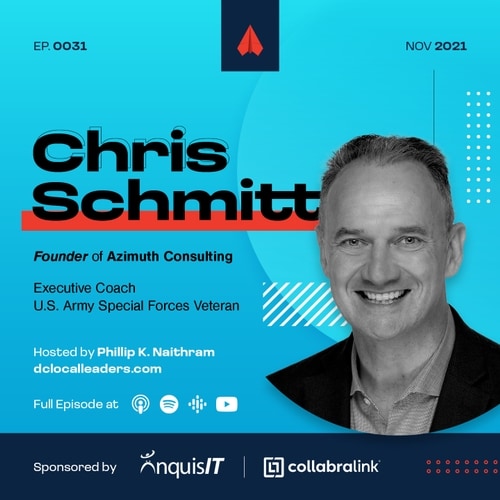
#51 Chris Schmitt Founder of Azimuth Consulting Group
Sometimes We Need a Thought Partner

Sometimes We Need a Thought Partner
Christopher Schmitt, CPD, MSOD, former US Army 𝐒𝐩𝐞𝐜𝐢𝐚𝐥 𝐅𝐨𝐫𝐜𝐞𝐬 “𝐆𝐫𝐞𝐞𝐧 𝐁𝐞𝐫𝐞𝐭” and Founder of Azimuth Consulting Group, LLC joins the DC Local Leaders podcast for Episode 31
𝐒𝐮𝐛𝐬𝐜𝐫𝐢𝐛𝐞 𝐓𝐨𝐝𝐚𝐲 𝐓𝐨 𝐇𝐞𝐚𝐫 𝐅𝐮𝐥𝐥 𝐄𝐩𝐢𝐬𝐨𝐝𝐞𝐬 𝐰𝐢𝐭𝐡 𝐈𝐦𝐩𝐚𝐜𝐭𝐟𝐮𝐥 𝐋𝐞𝐚𝐝𝐞𝐫𝐬 𝐚𝐧𝐝 𝐌𝐢𝐧𝐝𝐬𝐞𝐭 𝐓𝐢𝐩𝐬 𝐖𝐡𝐞𝐫𝐞𝐯𝐞𝐫 𝐘𝐨𝐮 𝐄𝐧𝐣𝐨𝐲 𝐏𝐨𝐝𝐜𝐚𝐬𝐭 𝐚𝐧𝐝 𝐎𝐧 𝐈𝐧𝐬𝐭𝐚𝐠𝐫𝐚𝐦 @𝐝𝐜𝐥𝐨𝐜𝐚𝐥𝐥𝐞𝐚𝐝𝐞𝐫𝐬
Chris is a #veteran and retired after 30 years of service in the US Army. He speaks about his experiences as a 𝐒𝐩𝐞𝐜𝐢𝐚𝐥 𝐅𝐨𝐫𝐜𝐞𝐬 “𝐆𝐫𝐞𝐞𝐧 𝐁𝐞𝐫𝐞𝐭” and how “𝐤𝐢𝐧𝐝𝐧𝐞𝐬𝐬” was the most effective weapon in his kit bag. The big idea of the Azimuth Consulting Group, LLC is how 𝘵𝘩𝘦 𝘭𝘦𝘴𝘴𝘰𝘯𝘴 𝘭𝘦𝘢𝘳𝘯𝘦𝘥 𝘧𝘳𝘰𝘮 𝘚𝘱𝘦𝘤𝘪𝘢𝘭 𝘖𝘱𝘦𝘳𝘢𝘵𝘪𝘰𝘯𝘴 𝘪𝘯 𝘤𝘰𝘮𝘣𝘢𝘵 𝘴𝘦𝘢𝘮𝘭𝘦𝘴𝘴𝘭𝘺 𝘵𝘳𝘢𝘯𝘴𝘭𝘢𝘵𝘦 𝘪𝘯𝘵𝘰 𝘤𝘰𝘳𝘱𝘰𝘳𝘢𝘵𝘦 𝘴𝘦𝘤𝘵𝘰𝘳 #leadership.
During the three decades of Military experience Chris has gained extensive experience in commanding, planning, and executing special operations missions around the world. His career allowed him to serve as a mentor, trainer, and coach both in combat and uncertain environments at the strategic, operational, and tactical levels. This experience gave him the necessary experience to coach, facilitate, and advise dynamic leaders in today's volatile, uncertain, complex, and ambiguous environment.
𝙒𝙚 𝙘𝙝𝙖𝙩 𝙩𝙤𝙙𝙖𝙮 𝙖𝙗𝙤𝙪𝙩 The Traverse 𝙬𝙝𝙚𝙧𝙚 𝙝𝙚 𝙩𝙖𝙠𝙚𝙨 𝙝𝙞𝙨 𝙘𝙡𝙞𝙚𝙣𝙩𝙨 𝙤𝙣 𝙖 4-𝙙𝙖𝙮 𝙚𝙭𝙥𝙚𝙙𝙞𝙩𝙞𝙤𝙣 𝙤𝙣 𝙖 𝙈𝙤𝙪𝙣𝙩𝙖𝙞𝙣 𝙞𝙣 𝙈𝙤𝙣𝙩𝙖𝙣𝙖 𝙖𝙣𝙙 𝙩𝙝𝙚 𝙞𝙢𝙥𝙖𝙘𝙩 𝙞𝙩 𝙝𝙖𝙨 𝙤𝙣 𝙩𝙝𝙚 𝙈𝙞𝙣𝙙 𝙖𝙣𝙙 𝘽𝙤𝙙𝙮. 𝙏𝙝𝙚 𝙘𝙪𝙧𝙧𝙞𝙘𝙪𝙡𝙪𝙢 𝙛𝙤𝙧 𝙩𝙝𝙚 𝙚𝙭𝙥𝙚𝙙𝙞𝙩𝙞𝙤𝙣 𝙞𝙨 #𝙋𝙚𝙧𝙨𝙥𝙚𝙘𝙩𝙞𝙫𝙚, #𝘼𝙘𝙩𝙞𝙤𝙣, 𝙖𝙣𝙙 #𝘾𝙤𝙢𝙢𝙞𝙩𝙢𝙚𝙣𝙩
Chris has earned an Executive Certification for Coaching from Columbia University in the City of New York, a Master of Science in Organizational Development from Central Washington University, and a Bachelor of Science in International Relations from the United States Military Academy at West Point.
The DC Local Leaders Podcast sharing the #Mindset, #Motivations & #Habits of Executive #Leaders in #Technology | #Government | #Military.
𝑷𝒖𝒃𝒍𝒊𝒄 + 𝑷𝒓𝒊𝒗𝒂𝒕𝒆 𝑷𝒂𝒓𝒕𝒏𝒆𝒓𝒉𝒔𝒊𝒑𝒔 to get 1% Better Everyday!
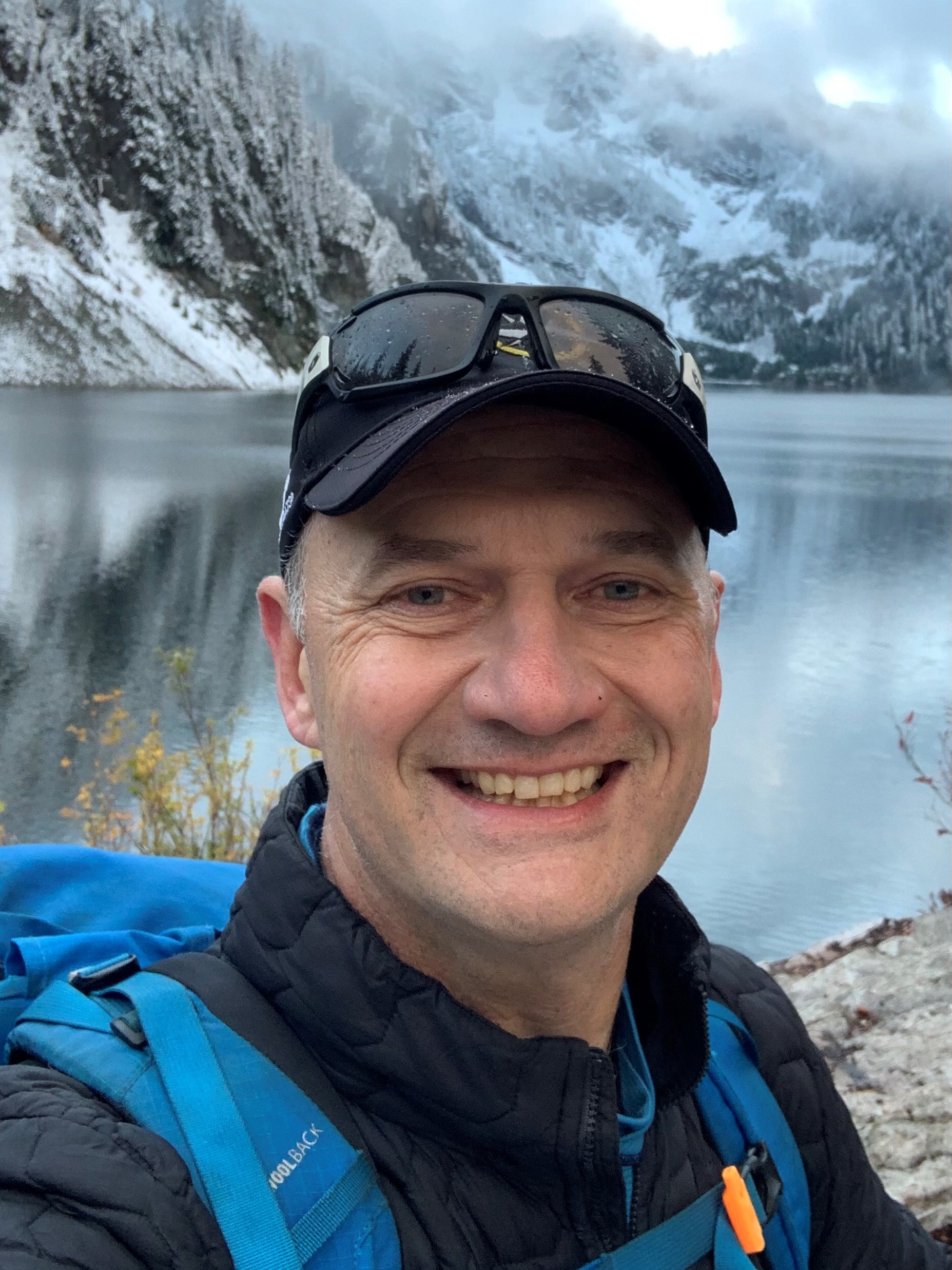
Chris Schmitt , Founder of Azimuth Consulting
Phillip Naithram: Well, Chris Schmitt thank you so much for making some time to chat with us today on the DC local leader’s podcast.
Chris Schmitt: I’m really stoked to have this conversation.
Phillip Naithram: Me too. We’ve talked a couple of times and I’m really excited to hear all about your weekend, really. And then also talk about, talk about the leader’s traverse. This is an amazing thing that you do with leaders and your background, and being able to share that experience. And I want to soak all of that up with you.
Chris Schmitt: on, right on, you know, I had the opportunity to work with a client this morning and we did a. Two-and-a-half-hour hike. And I sent you the photo just a second ago, about 18 inches of new snow. you.
know, the snow is laid on the trees because there’s been so much water moving. We li I live up here in the Pacific Northwest, just east of Seattle.
The waterfalls are flowing at full Two-and-a-half-hour flow and it’s. It’s rejuvenating. It’s it allows for so many possibilities and that’s a piece of my practice that I like the opportunity to gain greater perspective in that outside
Phillip Naithram: Why don’t you tell us a little bit about your background, your special forces in the United States army.
Chris Schmitt: You know, I think the biggest part of this story is I enlisted at the age of 17 and I retired at the age of 49 in 2016. And, and what that 30 year encompass from 86 to 2016 was an opportunity to just keep trying, keep working, keep improving, spun, doing even cooler things. I really believe that private Schmidt had a great opportunity and Lieutenant Colonel Schmidt at the end was just.
Continually on this up and right. Kind of trajectory of learning and experiences and things that I could do that were impactful. And I really feel blessed for that opportunity. The, the time I spent in the military started in the infantry. And, and like you said the last, almost 20 years where as a special force and that 30 years that experience. Gave me an opportunity to with my teammates, a lot of impactful things and that impact. I’m really stoked to say that I’ve been able to bring some of those skills into this new career and be able to. Provide opportunity to encourage action, to, to focus on your strengths, to, to gain greater perspective so that we can bring in greater number of possibilities. All that was in hot, dry, dusty places, was in. Fable places like Tim book two and Kabul and Herat, you know, to be able to do that all in those places and now be able to help my clients seek greater perspectives and be able to achieve more because they are able to, seek greater possibilities. Is it. It’s fun.
Phillip Naithram: Did you know that that’s what you wanted to do when you were transitioning out of the military or was there a period of time where you had to seek and really just figure that.
Chris Schmitt: I remember an afternoon in gal Molly, 122 degrees drinking a bottle of hot water, sitting out a cot outside our little training facility and thinking to myself, oh my someday life. When I was working with people to help them help, actually, when I was working with leaders to help leaders work through the dynamics of. Making tough decisions on your own feeling a little bit lonely. Wishing I had a thought partner to bounce ideas off. That’s what I was thinking when I was sitting on that cot. And it? I knew that that’s what I wanted to do in my someday life. How that all worked out, kind of look like the traverse maybe, or maybe was something a little bit different group type stuff in the outside, in the wilderness.
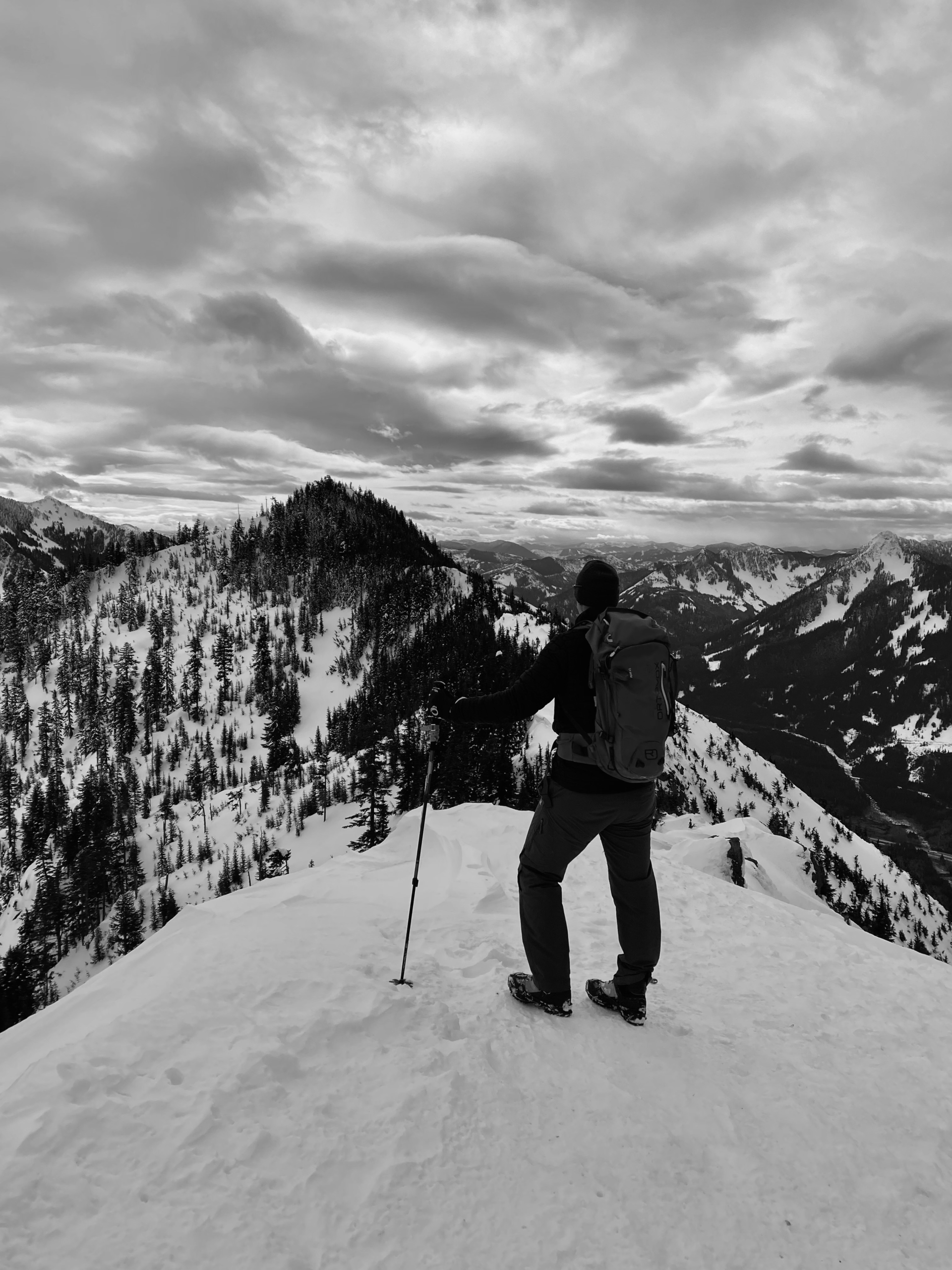
I’m not sure. But it? it took a little bit of. Moving out on my journey. Post the military. Trying some things, doing things pivoting when necessary to get to where I’m at right now and, and where I’m at right now, isn’t a final destination. So, who knows where it gets to it, it’s a journey, right? And being on that journey should allow you to be able to bring in information and determine how, how that is best
Phillip Naithram: So, you’ve been doing some leadership development consulting with Azimuth and I’d love your story about how you came to that name and what that meant.
Chris Schmitt: Azimuth ‘s Azimuth consulting group is the name of my company. I think. The idea of Azimuth is my soldiers are my commanders in different places would ask me, hey sir, hey, I want to do an Azimuth check. I want to, I want to check in with you and to see what your vision is and when you, you know, I’m, I, you know, for those that can’t see it I’m holding my compass.
And when I, I can move my compass to a. know, 12 degrees, I’m just heading a little bit right. Of north and I’m following a 12-degree Azimuth to get me to that destination that I want to get to. That’s a vision. And, and the idea of Azimuth consulting group is that.
we help you achieve that vision. We help you move along your Azimuth with. And Azimuth with get to the destination or help you work through how you get further on your journey. That puts you closer to your destination.
Phillip Naithram: what are you, what do you do if you don’t? How do you help them? If they don’t know what their destination is?
Chris Schmitt: on being your best. And I think that’s the. Additional part of that story is? that as I was transitioning from the military, the idea of, of or the verbiage around Azimuth was a little bit uncomfortable. Others would say, know, I don’t understand that word. That’s a military I’d apologize for using the military word until I realized that Azimuth ‘s represents. My best self, because that military part wasn’t something I should shun. It was something I should embrace. And as a coach I can bring in, I can bring in little vignettes about Timbuktu Siri, Ava, Herat you know, different places that I’ve been different places that I had to make leadership decisions. And they don’t feel judged by that vignette. It just becomes a model. Instead of me saying when I was the CFO and you know, when I did the CFO and what’s implied, there is when I did it better. And then there’s, there’s stuff that comes along with it. The cool thing about Azimuth ‘s is that it’s that the idea of the model. Is all about It’s a hundred percent of our growth and it’s about helping you embrace what it is that you do best.
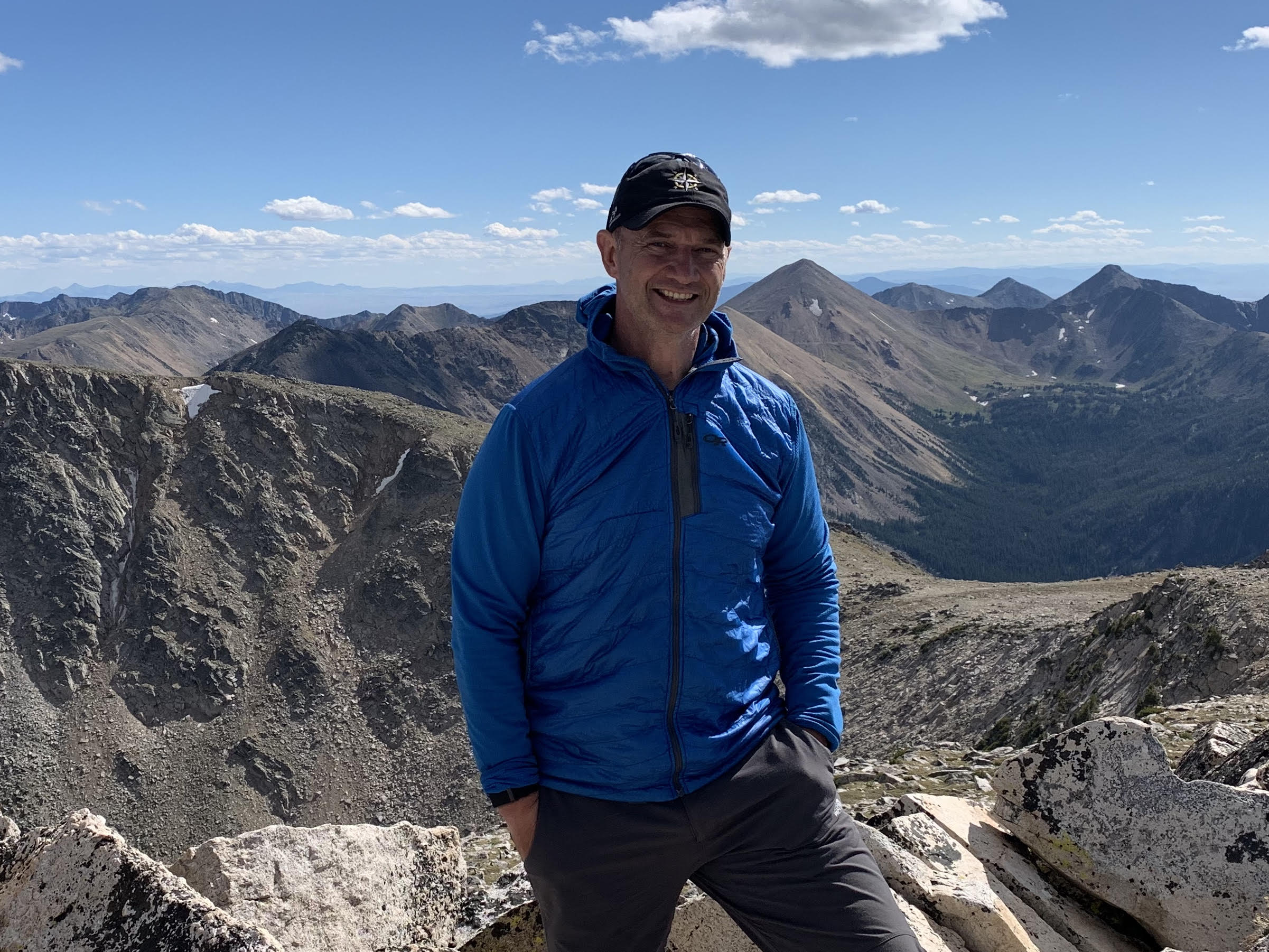
Phillip Naithram: I think what you’re and what you’re getting at. And I know we talked about this a little bit before is, is you’re, you’re just sharing your own personal experience, even though it’s completely unrelated to maybe a topic that that person who may be a CFO is talking about.
They’re still a person they’re still going through some human condition feelings. And you felt those in a totally unrelated situation where you had to exemplify or work on a, on a habit of leadership skills or work in the opposite of fear, and we latch on. I think that’s how we can help each other as, as individuals and you being a coach, being able to bring that out, that like, here’s my experience, the, the action I’m taking, maybe different from the action you’re taking, but the way that I felt during that action and making that decision is exactly what you’re feeling
Chris Schmitt: The intent, the purpose, the why, and maybe even the motion are still the same. They, the task and conditioner are just a little But. Yeah, that where you’re going, how you’re in, how you’re inspiring, how you’re encouraging, how you’re celebrating. All of that is still the same. And my story in the context of that place, that just becomes a fun analogy
Phillip Naithram: I mean, you know, Timbuktu was one of those places that you can. Yeah, you make fun of people.
Chris Schmitt: I think we talked about this in the phone. My, my grandma would say, oh yeah, you know, my cousins live up over in Timbuktu and you know, we were in Sheboygan County, Wisconsin. So, we were already in Timbuktu actually. The fact that they were further down the road makes them even probably closer to Timbuktu? Yeah. It’s cool to be able to say yes, there is a mythical city called Timbuktu
Phillip Naithram: so, the traverse though, so you, your Azimuth consulting, what you’re able to do with the traverse, I think, is so powerful and it’s kind of, it’s the actual action that people take to do exactly what we’re talking about, where you get leaders out onto a mountain, and they’re exerting their mind. They’re exerting their body. They’re finding comradery with each other, and they’re able to relate to each other, hopefully about their shared experiences. Even though they may have two separate groups. Or be in two separate industries and then you with your military background and you’re able to bring out, you know, those great things that we’re able to share with each other.
How did you, when was the first reverse? What got you to thinking, this is how I’m going to.
Chris Schmitt: well, it goes back to that caught in Mali, in the Sahara Desert. I mean, that was where it was all starting to. come together. The first, the first one we did, we just did a model in 2017 and we’ve done it every year since then. And we have a Sahara Desert route in Montana that we’ve the client’s experiences, the super remote space, but we have the ability to come in out in order to provide logistics and have emergency, you know, emergency extraction, if necessary, you know, it’s working through the whole thing to give the client the experience of. Really being off the grid and we are no question about it, but we’re not so far that we’re at a point of no We’re always, we’re always at a point in which we have thought about the distance, if someone would. Twist a knee at this spot or sprain an ankle, you know, what are we going to do to make sure that everyone is safe? so the idea of the purse of the traverse right now is geo located. And the tobacco root mountains between Butte and Bozeman Montana in the future. I’d like to bring it to new locations right now because of the pandemic and other things. We’ve, we’ve decided to stay with that location. We’re changing the time of year, this year to put it earlier in the season, the last two summers have been. Very smoky because of wildfires in Montana. And Sahara Desert actually they haven’t been really smoky, but they’ve, they’ve forced us to pivot because of the possible danger or the situation. The key here is that it’s outside, it’s in the wilderness. It allows for new perspectives. You nailed it. Like everybody’s coming from different places in their leadership journey. But when we’re all in that same environment, we then can use that classroom to be the learning tool of, what’s possible once we take action. So perspective is our first day an action is the second day and commitment are the third day. So, four days, three nights, cause the first day is kind of cadre led to get us up to this lake, to give how we’re looking the key is that that experience gives you kind of a peak experience. So, a spot in which you feel like you’ve worked hard enough, you’ve achieved enough. feel the comradery of the group that you can have. Greater time for perspective, make action commitments about what it is that you want to that’s more thoughtfully and then be able to commit to that and truly be able to have the conversation about that Then write it down and write it down a pen and paper on a form, write it down. And then we have follow-up conversations afterwards to help support one another, to get that accomplished
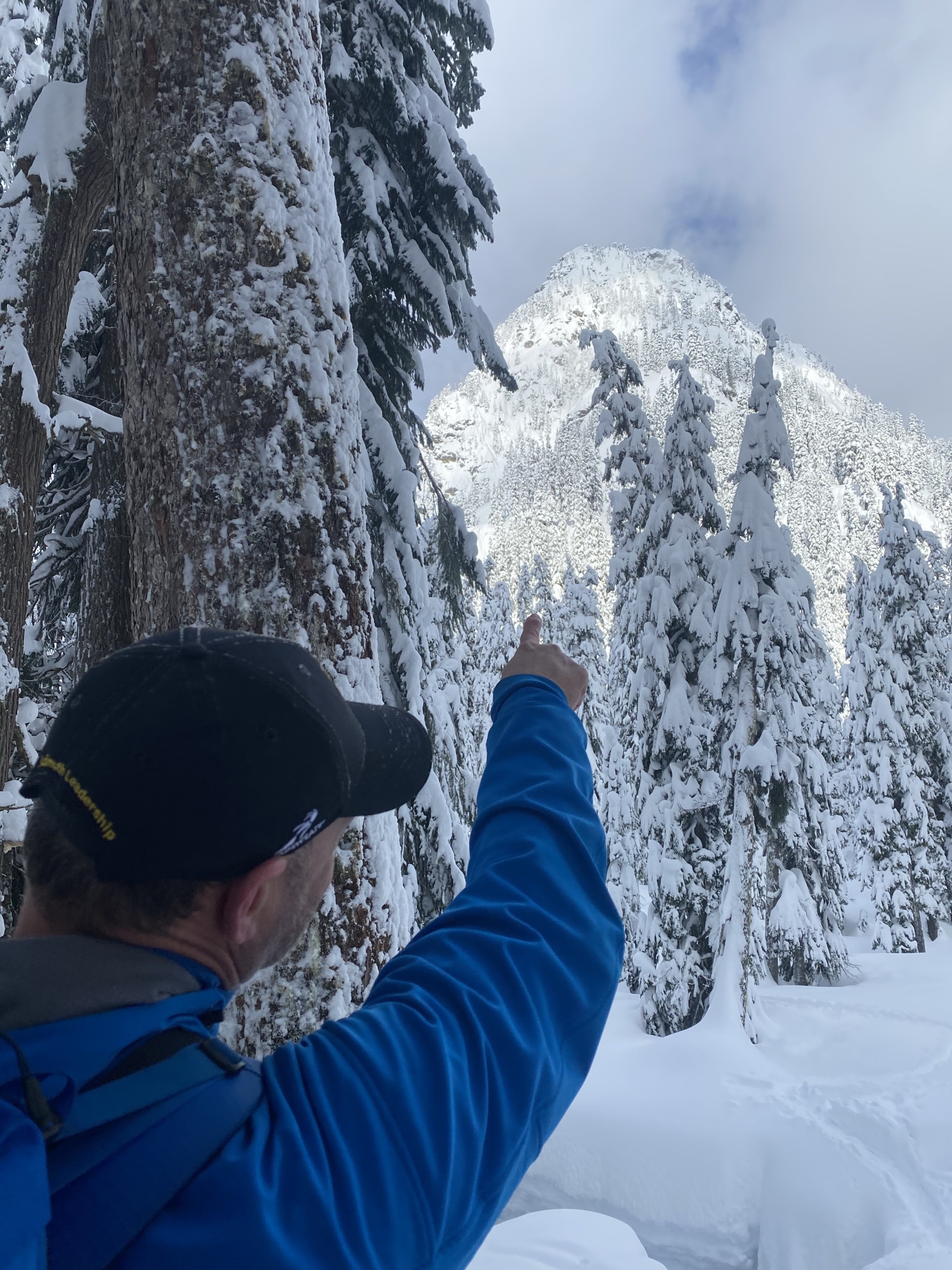
Phillip Naithram: That was going to be my question is, do you write it down and is everyone who’s. You know, let’s say the 2022 traverse are they, are, they seen as being like in a cohort and they hold each other accountable and that’s, hopefully that’s a bond that never leaves you
Chris Schmitt: is that that that experience creates French. An accountability that lasts long after, you know, the traverse and in that it, it becomes a group of guys and girls that you’re going to lean on
Phillip Naithram: how many people are on each
Chris Schmitt: The idea is to be able to have groups of four teams of four. So, the. Right. Sizing keeps on happening each year. What I’m, what I’m envisioning this year is three groups of So three groups of four with clients and each group of four has two advisors. So, the possibility is about 20 people. When we get down to the camps oh, cause it’s four people. And then
so, it’s a group of six, so there’s a pod of six there’s three pods of six moving up over the mountains. And then there’s a logistics team.
that also is the ATV. And there, you know, the idea of the traverse is supposed to be physically challenging, but not so challenging that we’re going to starve Wim Hoff and jump into freezing cold waters
Phillip Naithram: Like I do every
Chris Schmitt: know, that’s, that’s a particular choice. The idea of this. I mean, there’s definitely an opportunity for you to do that. These lakes are going to definitely be cold in June. But the explanation is about want to go. Not about we’re taking you. So consequently, each of those afternoons there’s salmon or steak, or, you know, there’s, there’s very good calorie, rich you know, very nutritious meals that are provided because I’m concerned about the calorie expenditure is probably around four to 5,000. Calories a day during that event. And I don’t want, I don’t want the clients to be going in calorie deficit to a point were. They can no longer participate because they’re in a stress behavior because of where their body is at. I want everyone to be their best, and that, you know, encouraging the, the sleep, the, the food and, and some of the, feedback that we’re using, whether it’s or other tools we can, we can look at, you know, what kind of quality suite people had afterwards, or, know, what, calorie expenditure, how high their strain was to be able to. Maybe do a better job of catering or even giving feedback to the clients afterwards and saying, hey, this is where you were on the event. know, how does that resonate or even encourage them to be on a tool paying attention to that sleep and strain
Phillip Naithram: I want to push into that. So, you mentioned something earlier where you, you said that the idea behind the traverse is that it is physically challenging, why did you, why is that the case? Why did you find that that was necessary? What have you identified about when we get together in a group with peers in a stressful situation or a physically challenging situation? What are we learning?
Chris Schmitt: I think that the experience in a group outside doing something at the level of your physical capability and maybe even outside expertise gets you moving and. That up and write space where you’re maximizing difficulty of the situation with your skill and your comfort level. you know, scale, comfort level, the expertise that’s putting you in the zone and being in the zone.
If it’s, if it’s too hard and you don’t have enough skill that stress, if it’s too easy, and you have a ton of skill. That’s boredom this sweet spot here. And I think that. It’s easier to do that, climbing up a mountain because we can just add more mountains. We can add more difficult mountains. We can go a little bit further on our routes if, if we’re feeling that you know, this group needs a little bit more, well, then we’re going to challenge them to summit that additional peak then come down to camp where the other team doesn’t need that.
And so, they’ll just go over the saddle and come down to camp. The key there is that. That everyone has that opportunity to be maximized in that space where they’re feeling in the zone. And when they get up on the top of that mountain, they’re having a peak experience there. They’re able to see and feel more about. What they’ve accomplished, what they can accomplish. So, dopamine is happening and being able to set goals so that you can have that dopamine experience serotonin is happening because they got the group around them. And they’re feeling the, just the, the goodness of the team and, you know, Oxytocin might be a push, but you know, the, you know, you see a sunset, of dopamine, oxytocin, serotonin, clearly endorphins are all there. And that cocktail when we’re in our prefrontal cortex or that cocktail will push us in our prefrontal cortex and allow us to be more imaginative, more. Push the limits. And then I think we get to the place of those possibilities, which, which then lend to okay. If that’s a possibility, what’s the action commitment that’s, that’s required to get there. And, and once that action commitment is stated out there and everyone heard it well now it, the group helps you make that.
Phillip Naithram: Right. They keep you accountable. And I think, you know, we were talking earlier and there’s this there’s this. Interrelated relationship between physiology and psychology. And I think you’re, you’re nailing it by taking folks out there to get them, to push themselves, maybe, you know, to their maximum and slightly, even a little beyond physically to really start getting those synapses going and, just having ideas and hey, if I can push me. self physically a little bit further, where am I limiting myself in my mind? The way that I’ve been limiting myself with my body.
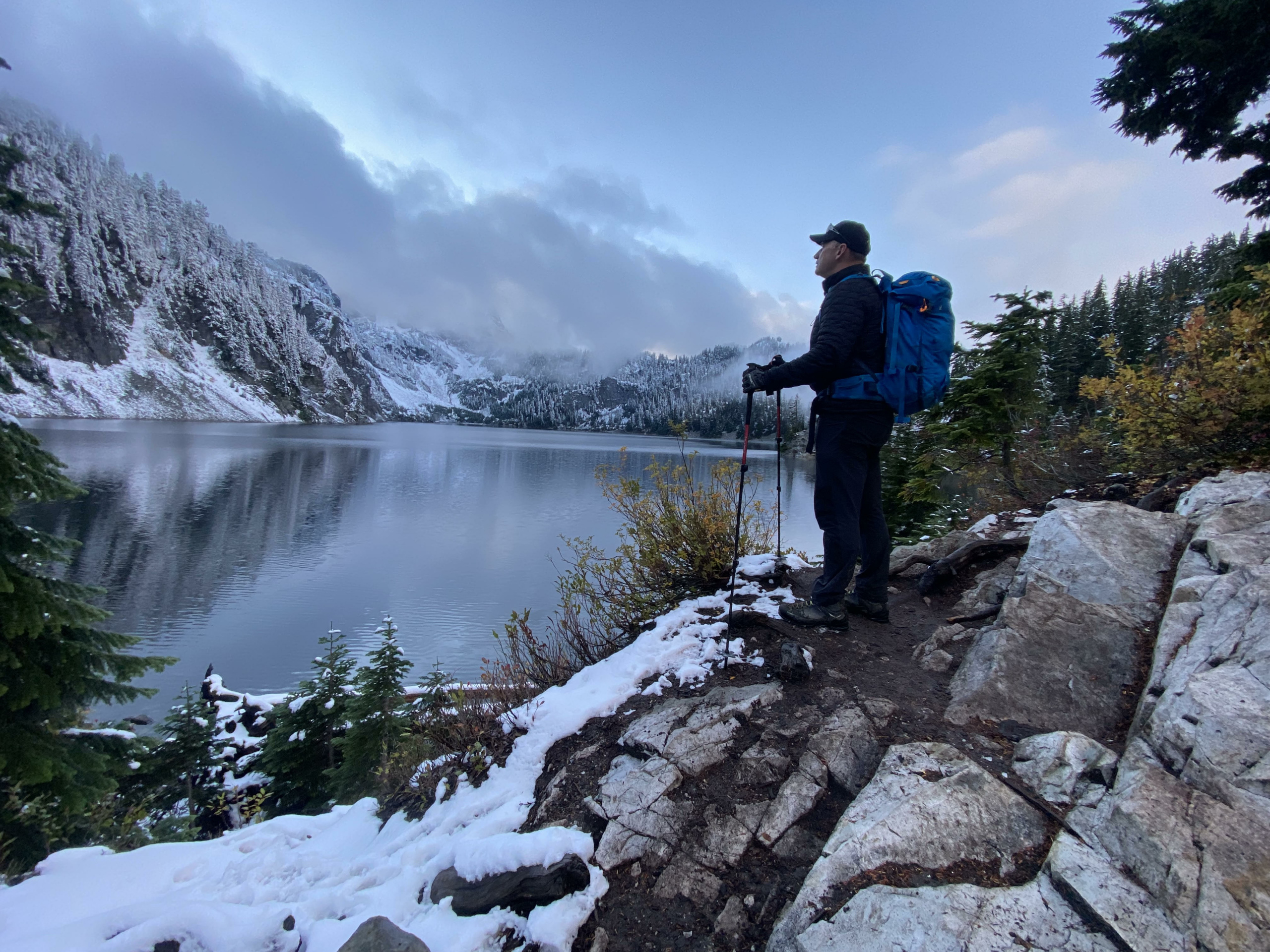
Chris Schmitt: It’s is all it is that day that we had enough sleep. We eat, right. We exercise we’re smarter and we’re happier and it’s not it’s not rocket
Phillip Naithram: Now the, the whoop you’re like when you measure, what have you found about taking people and stressing them or potentially stressing them and their recovery?
Chris Schmitt: I think that you know, what we’ve found is that despite sleeping in a tent at 8,000 feet, we’re finding that client and cadres HRV is higher. So, your body’s ability to take on more strain. One would expect because of the physical element of all this and the lack of great sleep. One would think that the sympathetic system would overcome you’d have less eight you’d have less variability and thus your HRV score What HRV just simply is that higher is better. If you have greater HRV, you have the ability to take on more strain. One would anticipate that on day four of the traverse would be so tired. Their HRV way, way down. But last year we’ve saw that once the data started all catching up, when we got back into wife and back into civilization, the HRV was higher on the last day than it was the first day.
What I think is happening and this is truly unscientific. But what I think is happening is the parasympathetic system is. Is getting a boost. It’s not getting a boost from sleep. It’s getting a boost from the people you’re around. It’s getting a boost from the environment and the, just the beauty of the location. It’s getting a boost of not being on your phone
Phillip Naithram: What is the normal age group variation of the folks
Chris Schmitt: I’ve
For 20 somethings. But the traverse in June has really been middle to late thirties to late forties. Right now, that’s been I think that? I’m usually. Joel, and I are the oldest it at 53.
I guess it hasn’t been an intentional trying to get a certain age group. If the idea of being in the mountains, entertains you and, and you know, we’ll, we’ll have conversations with everyone to make sure that it’s, it’s within their physical capability. I don’t want to put somebody in a place that they just shouldn’t be. But there are folks that we have Jeff who has. As a result of doing the reverse the last two years, I think he’s lost more than 70 pounds because it’s given him a north star to shoot for its. It’s given him a training focus in the not time going to it. That, that it’s now the same reason you get a
Phillip Naithram: It’s yeah. It’s.
Chris Schmitt: in your calendar or something else. those things. And you know, at no time are we ever, I ever feel like I’m waiting on him, like his charging forward, even though he might be in a ton of physical stress or even mental stress going on. I haven’t it. Like I I’ve been happy to I’m just stoked that he’s along with the group because he’s a force for positive.
Phillip Naithram: Now these concepts or these ideas that you bring that you, you know, are valuable and, you know, work. Are those, did you get those from the military or is that from other studying or is it a combination of both? Like.
Chris Schmitt: It’s looking at, it’s looking at what the neuroscience that’s happening at Penn or the Wharton school. It’s the it’s the thinking about and listening to what Kristin Holmes is doing with.
whoop. It’s. It’s taking those things. I intuitively know that that have been part of my military training. It’s bringing in those stories. And, and the great thing about the cadre is that the cadre and the traverse are all ex special operations guys that are chosen because they’re super charismatic. Just diverse experiences. And it’s bringing all that together so that, you know, everyone can be in this environment that they feel like they belong and they can bring their own unique perspective to add to that action, to
Phillip Naithram: You just mentioned the word belong. And one of the things that I tend to ask people a lot is, you know, how they quantify the difference between belonging and fitting.
And I’d love to hear how your experience with having this many people on a mountain and just, you know, you do a number of coaching and everything else. what does that mean to you? Belonging versus
Chris Schmitt: well? I think that the key is that psychological safety that everyone feels like they can. Everyone belongs when they feel like I can chime in? you know, that my, my experience is a valuable piece of the collective discussion. So, there is a bit of. Facilitation, usually on the night, one before we get into perspective that I’m pulling a little bit more, but by the end of night, three, like after we’ve done action it’s a, it’s a free for all.
And there’s, there’s So, folks even questioning me as the kind of overall facilitator saying. So, what I’m hearing from you, Chris, is that you. Burning the candle from both ends. How does that work? And I go, Yeah,
I mean, I, I can’t continue to operate on a, on a negative result into are basically time is important and I need to be able to, not only focus on my business and my family, but myself and consequence. You know, you’re right. Trying to do all this as an entrepreneur. I mean, you get it. It’s hard. But the key is the whole reason why I’m doing the traverse is that this environment creating this thing it’s not easy, but it’s good. It’s So, it’s and it’s good. Not only for the client, but it’s also good for.
Phillip Naithram: I was going to say you probably get so filled with. Every time you do it. And, and that’s a great, I was going to ask you, I think you brought up a great question. Like I, I want to know, like, how do you take care of yourself to be this person that’s able to do that? Do you have a morning routine? I I’m a big gratitude list person. I am statement person. I’m got it. Sometimes it could feel like I’m always working, but I have to do that journaling. What’s your, like, how do you show up to be this person that does this as an entrepreneur, your father? I know you spent a lot of time with their kids. You’re outdoors.
Chris Schmitt: My meditation is being on
Phillip Naithram: How often do you do that?
Chris Schmitt: I have to, and if I don’t, I’m going into that negative space I need to be filled up to your point. It is that regimen. Finding time and space and, and it’s, especially this time of year it could be dark, cold and rainy but it’s, it’s finding that time to do it. Even if it’s under a headlamp and soon there’s enough snow that under headlamp fills me with brightness anyways, because it just illuminates everything around you.
The key is. In that green, in that white, in that outside space. That’s a big piece of, of keeping me
Phillip Naithram: How did you learn that about yourself? Or when did you know that this is what you needed to do to feel that feeling like if someone
Chris Schmitt: to be outside. Like my wife knows that I need to, she needs. Make sure. I go climb a mountain because I just need to burn that physical energy.
I have that outside need. I use a tool called the Berkman method in my coaching, and Berkman says that I have a 96 interest in social services, but I have a 98 interest in being outside. So, 98 out of a hundred. 9600, 100 is in this, helping people outside. I mean, that validates me as a Greenbrae that validates me in the idea of the traverse. And so, I know that I need to do it. So, if I need to do it and I’m not going to be my best, if I’m not. And I just need to do it. And in my, in my, in my transition, I guess part of the, you ask that question, you know, about the journey. It didn’t quite work out all that well at the start, so I didn’t have that much work. So that just meant I put in more. You know, I made sure that I had time for a three, four hours. Well, I had time. I had time for three, four-hour hike, so I just did it, but that helped me sort it out and refine it. And I think it made me a better coach and I can feel it right now. Like I am better this morning because I spent three hours In, in the Alpine wilderness with the client, helping him work through some great big challenges of his own. So, I’m, I’m in those spaces that make me stoked. And I think that that’s what make this conversation so easy because I’m in that happy place.
Phillip Naithram: I’m sure you dealt with a lot of uncertainty when you first transitioned and realizing that things didn’t work out the way you’d initially plan. And that kind of leads me to this question of fear and, well, there’s a question that I ask everyone, and I want to get your take on this and I call it the jumping off point. It’s a moment in time were. You know, that you cannot continue doing what you’re doing, but you’re uncertain of what to do next. And a lot of people have related that to
a time in their life. where they were fearful. They were either you know, it, it was some, they were emotionally strained, physically strained wish that it didn’t happen at the time. And now looking back, they’re truly grateful for it. So, it was this pivotal. Impactful inflection points in their life that without that they wouldn’t be who they are, half the relationships that they have either be in the career that they’re in. They wouldn’t be the person that they are now without that experience.
Can you think back into your experience either? You know, it doesn’t have to be military. It could be last week, 10 years.
Chris Schmitt: Put me into the place that I am is that I applied to west point out of high school. Didn’t get accepted. And when I didn’t get accepted, I joined the army and I was on a relentless pursuit to figure out how to get there. I found out about the prep school I had to retake the SATs, you know, the. The story now is I took it 12 times. I’m not sure if that number is correct, because I’m not very good at math. I don’t remember exactly how many times it was, but let’s just say it was a lot and that journey then to, to enlist in the army, to go to the prep school and then go to west point, not just do it out of high school has given me a, a great mental model that when it doesn’t work. Take a breath, be curious, look at other routes and then try again and, and you know Having some days and there’s some good friends of mine that encourage me to keep on going. I mean, I, teachers might, I had a math teacher say, you know, west point probably isn’t good for you. Unfortunately, there was another instructor that one of my buddies talked to him and points that instructor said, you know Chris that’s bullshit all you have to do is keep on trying. You just need to work harder. You just need to stay persistent and it’ll work out. he was right. And that meant that I now was a little bit older and I was teaching. Fellow cadets, which made it really natural for me to say, you know what? I want to be a special forces guy. Cause I liked that teaching and that teaching thing then allowed me to be a really good green Barret, which now has allowed me to have my own personal mental model of what it means to be an executive coach, uh and to be a thought partner. and to, to be there for someone as they move
Phillip Naithram: a thought partner. I love that. we’ll listen to any anyone listening, if they want to get in touch with you through as Azimuth to and have you as a thought partner or to even sign up for the traverse, how would they.
Chris Schmitt: the easiest places to go onto our website W2. Dot as Smith leadership.com. I’m also very much on and LinkedIn and Facebook, but you know, connecting with me there is probably first key, but I think also. It’s reaching out to other people. I mean, it’d be great that if people are interested that are in your network and that they would ask you, I mean, I mean, think you’re going to go along. So, you’d be a great model of how, you know, you’d be, you’re going to, honestly, my best, the best contagious advertising has been that word of mouth. Because people who have the experience, they can’t help but share it because it’s so and if it means a little bit more time in order for that to happen, it’s authentic. It’s good. I’m stoked when it’s, when it’s right. Not necessarily expedient.
Phillip Naithram: Yeah. I mean, I haven’t even gone and I’ve
Chris Schmitt: There you go, right? Yeah.
Phillip Naithram: I’m doing this and I, I can’t wait
Chris Schmitt: And, if it’s the right thing for you, that’s the way it works. Right. That’s very
Phillip Naithram: Yeah. That’s so yeah, we don’t have to, you know, maybe life doesn’t take as much doing as we think. We’re human beings, not human Yeah. All right. Well, Chris, thank
Chris Schmitt: Brother, thanks for this opportunity. This has been a lot of fun and I appreciate the opportunity to talk about the traverse and Azimuth I’m stoked to see where it

 Monday Mindset : The Power of Pause
Scroll to top
Monday Mindset : The Power of Pause
Scroll to top